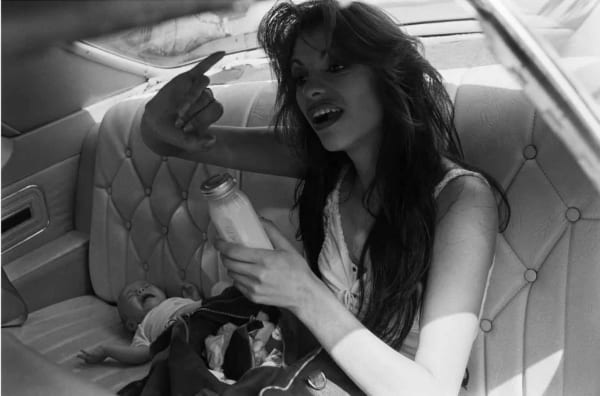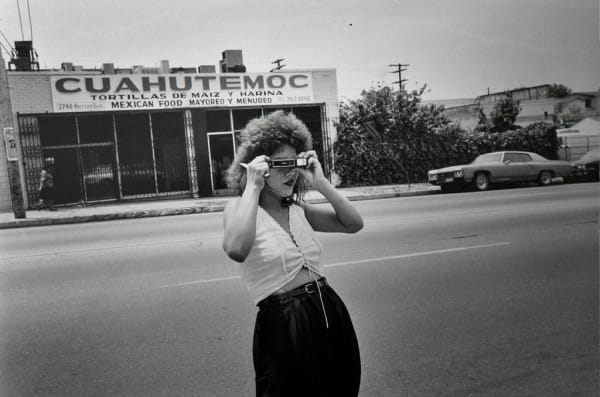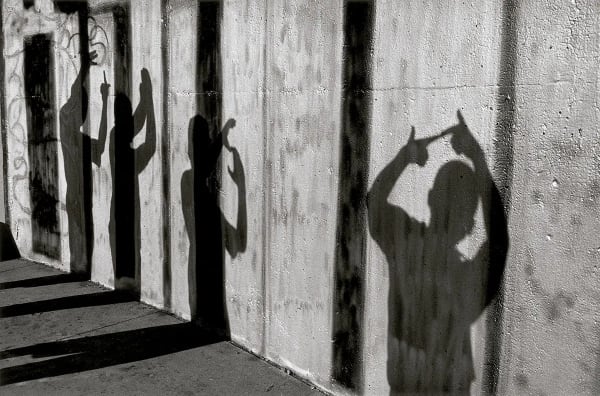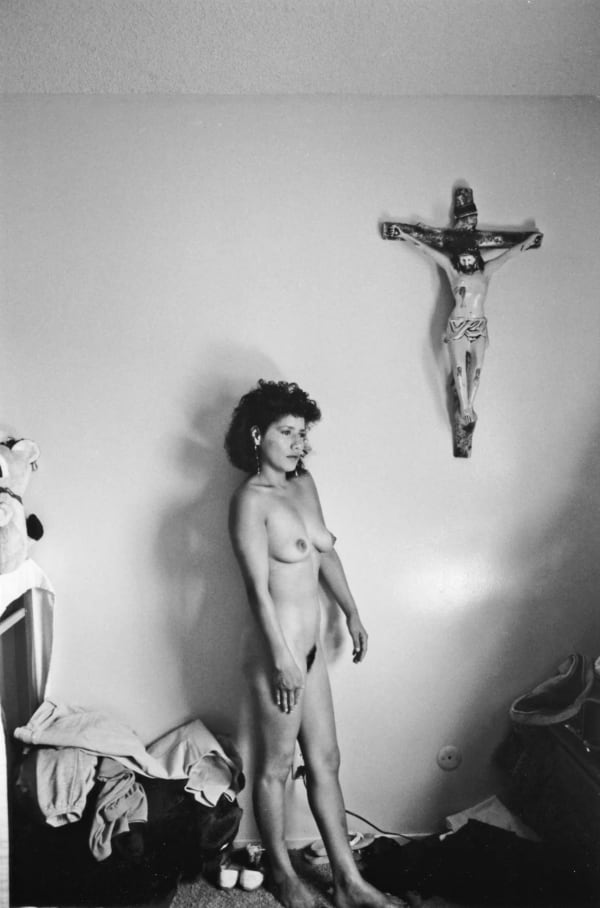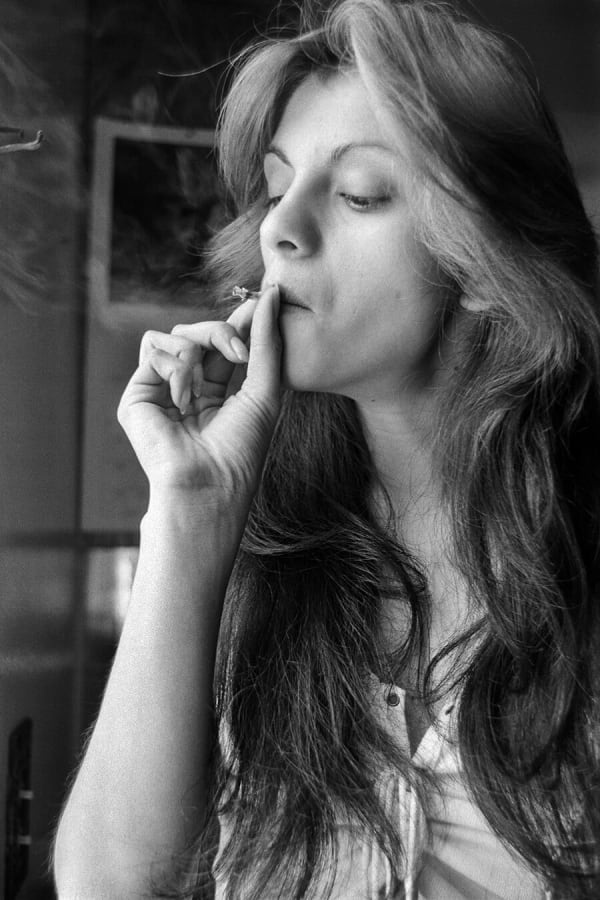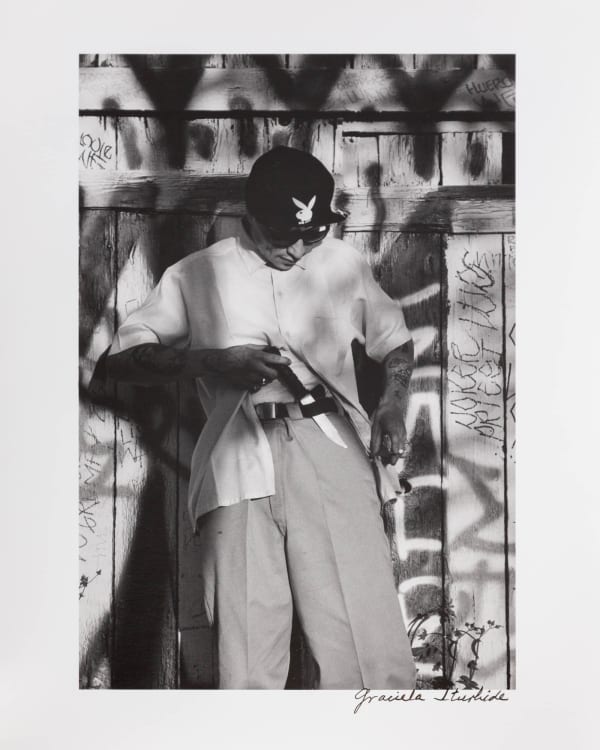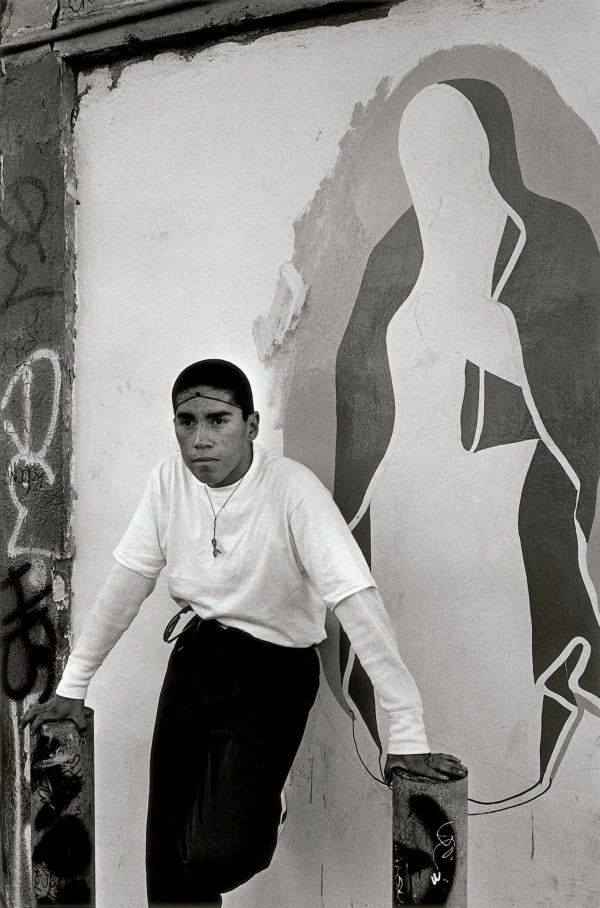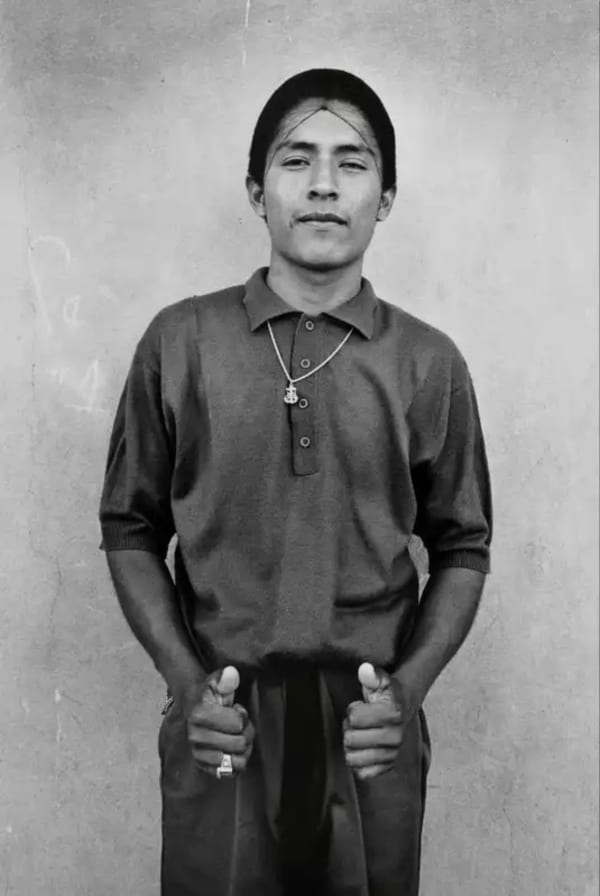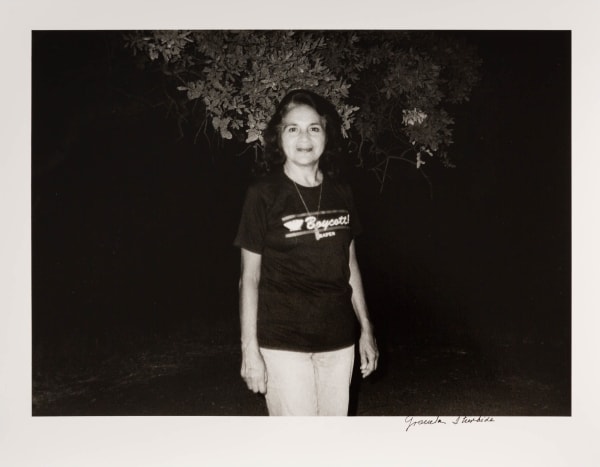Graciela Iturbide: Las Californias
Ruiz-Healy Art is pleased to present Graciela Iturbide: Las Californias, a solo exhibition showcasing the work of the internationally acclaimed photographer. Graciela Iturbide: Las Californias will be on view at our New York City gallery from November 13, 2025, to January 16, 2026, with an opening reception on November 13 from 6:00 to 8:00 PM. A fully illustrated catalogue will be published alongside an essay written by Dr. Ricardo Romo, author of East Los Angeles: History of a Barrio, first published in 1983. This exhibition marks Iturbide’s second solo show with the gallery and her first at our New York City location.
Graciela Iturbide is celebrated for her poetic black-and-white photographs, which blend documentary storytelling with deep explorations of identity and culture. For over fifty years, Iturbide has captured, among others, the lives of Indigenous Mexican communities, rituals in India, and landscapes across the United States. Iturbide describes her work as “photo essays,” drawing inspiration from Henri Cartier-Bresson, Tina Modotti, and Manuel Álvarez Bravo, with whom she worked in the early 1970s; her elegant compositions document the world around her while embracing spontaneity and beauty.
Las Californias showcases Iturbide’s work from East Los Angeles, California, to Tijuana, Baja California, illustrating the complexities of life in the borderlands. Captured in the East Los Angeles neighborhood of Boyle Heights in 1986, Iturbide photographed a group of predominantly deaf Mexican American women connected to the White Fence gang. Iturbide first met the White Fence gang while on a tour of the United States alongside fellow photographers for the book A Day in the Life of America. This initial meeting developed into a thirty-three-year friendship and an extensive photographic story spanning 1986 to 2019.
In her White Fence series, Iturbide focused on hearing-impaired cholas — Lisa, Arturi, Cristina, Rosario, and her baby, Boo Boo —all living in an apartment in Boyle Heights, portraying their daily lives with empathy and respect. Cholo/a is a term originating in Spanish Colonial-era Mexico that designated people of mixed race, Indigenous people, or people of low social status within the caste system. After the Second World War, the term was adopted in California as a subculture.
White Fence is a Mexican heritage gang formed in the 1920s that initially served as a partner of La Purisima Church. After WWII, the gang separated from the church, renaming itself permanently to the White Fence gang, a reference to a white fence in Boyle Heights that separated Mexican and White residents in LA. In the White Fence series, many of the subjects are captured using sign language, which serves to communicate both their gang affiliation and their daily interactions as hearing-impaired women. In the photograph Cholas I (con Zapata, Juárez y Villa), White Fence, East LA, Iturbide notes a disconnect between Chicano culture and Mexican history. In an interview with the Los Angeles Times, she recalls the moment she captured this photograph: “For me, it was very interesting because they have a nostalgia about Mexico that isn’t always based in fact. A group of them told me, ‘We want you to photograph us by the mural of the mariachis.’ It was a mural of Mexico’s historical heroes: Benito Juárez and Pancho Villa [and Emiliano Zapata]. They can be really mistaken about Mexico, but they still have a profound nostalgia for it.”
During one of her trips to California, to visit the White Fence gang, Chicana artist Ester Hernández introduced Iturbide to the renowned farmworkers’ leaders and civil rights advocates, César Chávez and Dolores Huerta, founders of the United Farm Workers (UFW). Iturbide's portraits of the Chicano icons reflect the collective spirit of the Chicano struggle, a movement in which Mexican Americans reclaimed their history, culture, and identity. Figures like Huerta and Chávez, along with cultural symbols such as the Thunderbird and the Virgen de Guadalupe, represented this transformation. The once-pejorative term “Chicano” grew into a symbol of cultural pride and resistance, celebrated through art, music, protests, and fashion. Iturbide also photographed Mexican nationals in Tijuana, Mexico, a city bordering San Diego County, California, who longed for a life in the United States and to pursue the American Dream. These photographs formed the La Frontera series.
In the exhibition, Las Californias, Iturbide's gaze is neither distant nor merely anthropological: it is one of closeness and respect. Before taking a photograph, Iturbide always obtains permission from her subjects, allowing them to express themselves as they wish. Both of these series, La Frontera and White Fence, serve as symbols of collective resistance, aspiration, and identity. In White Fence, the work offers no fixed narrative but instead a collection of fragments: fences, walls, shadows, and gestures. The La Frontera series explores themes of belonging, separation, and hope. Las Californias does not simply depict a geographic or social space: it encourages reflection on belonging, identity, the marks of migration, and the power of the image as an act of memory and intercultural dialogue. The exhibition invites viewers to consider not only the history of Chicano identity in California but also the universal themes of migration, community, and the delicate yet powerful search for home.
-
 Graciela IturbideRosario, Cristina y Lisa, White Fence, East Los Ángeles, 1986Vintage Silver Gelatin Print14 x 11 in
Graciela IturbideRosario, Cristina y Lisa, White Fence, East Los Ángeles, 1986Vintage Silver Gelatin Print14 x 11 in
35.6 x 27.9 cm -
 Graciela IturbideCholas (con Zapata, Juárez y Villa) White Fence, East Los Ángeles, 1986Silver Gelatin Print
Graciela IturbideCholas (con Zapata, Juárez y Villa) White Fence, East Los Ángeles, 1986Silver Gelatin Print
20 x 16 in
50.8 x 40.6 cm -
 Graciela IturbideWhite Fence, East Los Ángeles (Cristina and mural), 1986Vintage Silver Gelatin Print
Graciela IturbideWhite Fence, East Los Ángeles (Cristina and mural), 1986Vintage Silver Gelatin Print
10 x 8 in
25.4 x 20.3 cm -
 Graciela IturbideRosario y su bebé, White Fence, East Los Ángeles, 1986Silver Gelatin Print
Graciela IturbideRosario y su bebé, White Fence, East Los Ángeles, 1986Silver Gelatin Print
8 x 10 in
20.3 x 25.4 cm -
 Graciela IturbideCristina tomando una foto, White Fence, East Los Ángeles, 1986Silver Gelatin Print
Graciela IturbideCristina tomando una foto, White Fence, East Los Ángeles, 1986Silver Gelatin Print
16 x 20 in
40.6 x 50.8 cm -
 Graciela IturbideCholos Harpys, East Los Ángeles, 1989Silver Gelatin Print
Graciela IturbideCholos Harpys, East Los Ángeles, 1989Silver Gelatin Print
16 x 20 in
40.6 x 50.8 cm -
 Graciela IturbideCristina en su casa, White Fence, East Los Ángeles, 1986Vintage Silver Gelatin Print
Graciela IturbideCristina en su casa, White Fence, East Los Ángeles, 1986Vintage Silver Gelatin Print
14 x 11 in
35.6 x 27.9 cm -
 Graciela IturbideRosario, White Fence, East Ángeles, 1986Vintage Silver Gelatin Print
Graciela IturbideRosario, White Fence, East Ángeles, 1986Vintage Silver Gelatin Print
14 x 11 in
35.6 x 27.9 cm -
 Graciela IturbideRosario y Boo Boo, White Fence, East Los Ángeles, 1986Silver Gelatin Print
Graciela IturbideRosario y Boo Boo, White Fence, East Los Ángeles, 1986Silver Gelatin Print
14 x 11 in
35.6 x 27.9 cm -
 Graciela IturbideCholos en la recamara, East Los Ángeles, 1986Silver Gelatin Print
Graciela IturbideCholos en la recamara, East Los Ángeles, 1986Silver Gelatin Print
16 x 20 in
40.6 x 50.8 cm -
 Graciela IturbideAutorretrato en sombra, White Fence, East Los Ángeles, 1989Vintage Silver Gelatin Print16 x 20 in
Graciela IturbideAutorretrato en sombra, White Fence, East Los Ángeles, 1989Vintage Silver Gelatin Print16 x 20 in
40.6 x 50.8 cm -
 Graciela IturbideWhite Fence, East Los Ángeles (Rosario, Lisa, and friends), 1986Silver Gelatin Print
Graciela IturbideWhite Fence, East Los Ángeles (Rosario, Lisa, and friends), 1986Silver Gelatin Print
11 x 14 in
27.9 x 35.6 cm -
 Graciela IturbideCholo Harpys, White Fence, East Los Ángeles, 1986Silver Gelatin Print
Graciela IturbideCholo Harpys, White Fence, East Los Ángeles, 1986Silver Gelatin Print
10 x 8 in
25.4 x 20.3 cm -
 Graciela IturbideVirgen de Harpys, Maravilla, East Los Ángeles, 1986Silver Gelatin Print
Graciela IturbideVirgen de Harpys, Maravilla, East Los Ángeles, 1986Silver Gelatin Print
11.97 x 9.33 in
30.4 x 23.7 cm -
 Graciela IturbideWhite Fence Gang, East Los Ángeles, 1986Silver Gelatin Print
Graciela IturbideWhite Fence Gang, East Los Ángeles, 1986Silver Gelatin Print
14 x 11 in
35.6 x 27.9 cm -
 Graciela IturbideLa frontera, Tijuana, Baja California, México, 1989Silver Gelatin Print
Graciela IturbideLa frontera, Tijuana, Baja California, México, 1989Silver Gelatin Print
14 x 11 in
35.6 x 27.9 cm -
 Graciela IturbideColonia Libertad, Tijuana, Baja California, 1991Silver Gelatin Print
Graciela IturbideColonia Libertad, Tijuana, Baja California, 1991Silver Gelatin Print
16 x 12 in
40.6 x 30.5 cm -
 Graciela IturbideCholo en Tijuana, Baja California, 1990Silver Gelatin Print
Graciela IturbideCholo en Tijuana, Baja California, 1990Silver Gelatin Print
14 x 11 in
35.6 x 27.9 cm -
 Graciela IturbideCesar Chavez, Kern County, California, 1991Silver Gelatin Print
Graciela IturbideCesar Chavez, Kern County, California, 1991Silver Gelatin Print
11 x 14 in
27.9 x 35.6 cm -
 Graciela IturbideLos Ángeles, Estados Unidos, 2013Silver Gelatin Print
Graciela IturbideLos Ángeles, Estados Unidos, 2013Silver Gelatin Print
14 x 11 in
35.6 x 27.9 cm -
 Graciela IturbideDolores Huerta, Kern County, California, 1991Silver Gelatin Print
Graciela IturbideDolores Huerta, Kern County, California, 1991Silver Gelatin Print
11 x 14 in
27.9 x 35.6 cm -
 Graciela IturbideLa frontera, Cañón Zapata, Baja California, 1991Silver Gelatin Print
Graciela IturbideLa frontera, Cañón Zapata, Baja California, 1991Silver Gelatin Print
8 x 10 in
20.3 x 25.4 cm
-

Graciela Iturbide: Borderline Images from East Los Angeles and Tijuana
Ricardo Romo, La Prensa, December 14, 2025 -
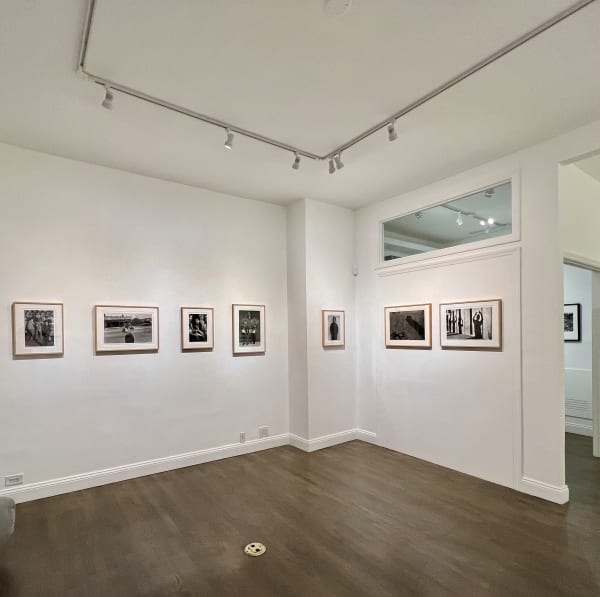
Graciela Iturbide: Las Californias
Meer, November 8, 2025 -

Must See: "Graciela Iturbide: Las Californias" at Ruiz-Healy Art | New York
Artforum, November 3, 2025 -

Graciela Iturbide's "Las Californias" reveals decades of intimate portraits from East LA to Tijuana
Artdaily, June 14, 2025





